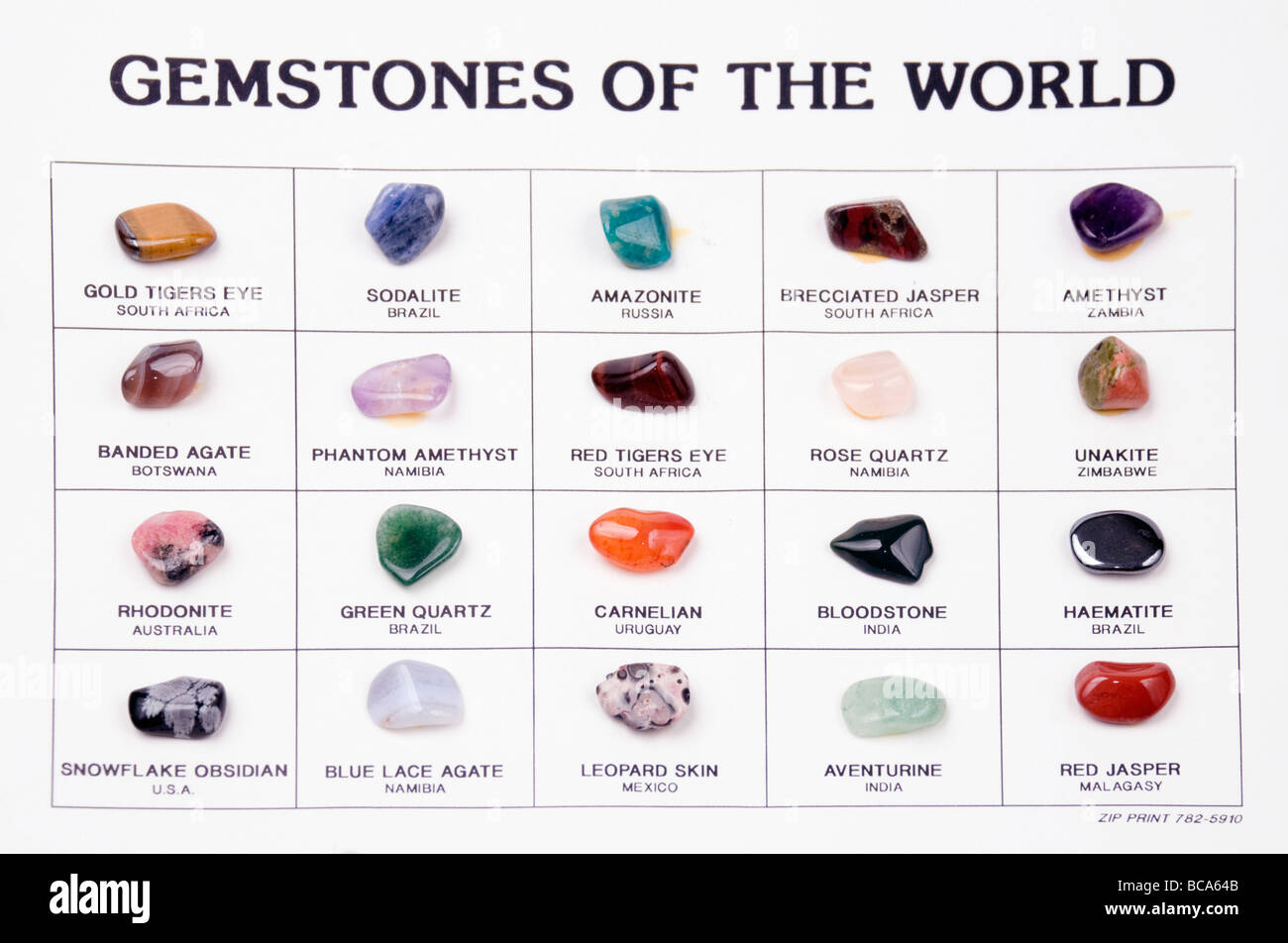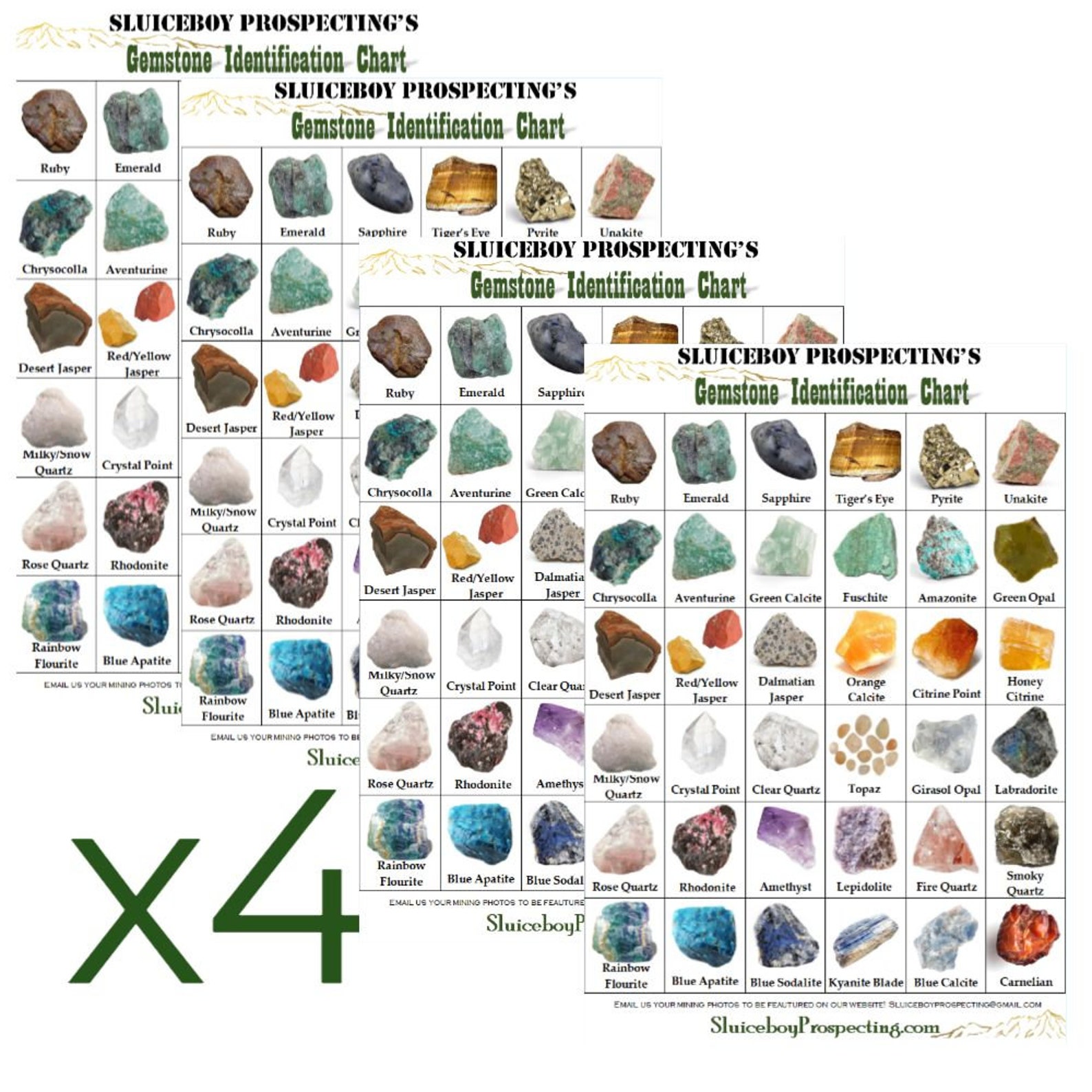Gemstones are fascinating and beautiful, and identifying them correctly can be a challenging task. If you are a gemstone enthusiast, you have probably come across various charts and identification guides that can assist you in recognizing different types of minerals and stones. Here, we present a selection of images and information about gemstone identification that can help you better understand these precious and semi-precious stones.
Introduction
Gemstones come in various shapes, colors, and sizes. They possess unique properties that make them valuable for various purposes. Some gems are used in jewelry making, while others have industrial or commercial uses. One of the most important things you need to know about gemstones is their identification. Knowing how to identify a specific gemstone can help you determine its value, origin, and rarity.
About Gemstones
Gemstones are minerals that have been cut, polished, and fashioned for decoration purposes. Some of the most common gemstones in the world include diamonds, emeralds, rubies, sapphires, and pearls. Each gemstone has its own unique characteristics, including color, clarity, brilliance, and durability. Some gemstones are harder and more durable than others, making them useful for industrial applications as well.
Gemstones can be classified into two broad categories: precious stones and semi-precious stones. Precious stones are those gemstones that are rare, valuable, and more durable than semi-precious stones. They include diamonds, emeralds, rubies, and sapphires. Semi-precious stones, on the other hand, are more commonly found and less valuable than precious stones. Examples include agate, amethyst, citrine, garnet, and turquoise.
Gemstone Identification
Identifying gemstones is not an easy task. It requires knowledge about the different types of minerals and crystals that make up gemstones, as well as their physical and chemical properties. One of the most effective ways of identifying a gemstone is by looking at its physical properties, including color, transparency or opacity, luster, cleavage, and fracture.
Gemstone color can range from clear and colorless to black or vibrant, bold colors such as those of emeralds or sapphires. Gemstones can also have different levels of transparency, which is determined by how much light is allowed to pass through a stone. Luster refers to the way light reflects off the surface of a gemstone.
Cleavage is the way a gemstone breaks when it is struck or cut, while the fracture describes the way in which it breaks along its internal structure. Other factors that can help identify a specific gemstone include its specific gravity, refractive index, and hardness. Certain gemstones, such as diamonds, have unique physical properties that can be used to distinguish them from other stones.
FAQ
Q: What is the difference between precious and semi-precious stones?
A: Precious stones are rare, valuable, and more durable than semi-precious stones. They include diamonds, emeralds, rubies, and sapphires. Semi-precious stones, on the other hand, are more commonly found and less valuable than precious stones. Examples include agate, amethyst, citrine, garnet, and turquoise.
Q: How can you tell if a gemstone is genuine?
A: There are several ways to determine if a gemstone is genuine. One of the easiest ways is to look for imperfections, such as bubbles or cracks, which may indicate that the stone is synthetic or fake. You can also test the stone's hardness, which can be done using a special tool called a Mohs scale. Additionally, a certified gemologist can examine the stone, assess its properties and provide an expert opinion.
Q: Are gemstones used for anything other than jewelry making?
A: Yes, gemstones have various industrial, commercial, and medicinal applications. Diamonds are used in cutting tools, grinding wheels, and in electronic components. Emeralds are used in lasers, while rubies are used in watches to provide accuracy. Various gemstones are believed to have healing properties, and their use in alternative medicine is gaining popularity.
Conclusion
Gemstones are precious and rare treasures that come in various shapes, colors, and sizes. Identifying a specific gemstone can be a challenging task, but knowing how to do it can help you assess its value, rarity, and potential uses. Looking at the physical properties of a gemstone, such as color, transparency, luster, cleavage, and fracture, can assist in its identification.
With the images and information presented here, you have a better understanding of gemstone identification and can appreciate the beauty of these stones even more. Whether for personal enjoyment or professional interest, learning about gemstones can be a fascinating and rewarding experience.

Crystal Identifier Rough Gemstone Identification Chart
This chart provides a visual guide for identifying different types of rough gemstones. It includes various types of stones, including amethyst, rose quartz, turquoise, and citrine.

Gemstone identification chart on white background
This chart provides a detailed guide for identifying different types of gemstones. The chart is organized by color and includes images of various types of stones, such as diamonds, sapphires, and rubies.

Raw Gemstones
This image captures the natural beauty of raw gemstones. The stones are uncut and unpolished, showing their true colors and shapes. Raw gemstones are often used by collectors and jewelry makers who want to showcase the natural beauty of these stones.
Gemstones List with Description
This image shows a list of different types of gemstones, along with a brief description of each stone's physical and chemical properties. This guide can be useful for those who are just starting to learn about gemstones and want to understand their unique characteristics.

Gemstone Name Chart
This chart provides a visual guide for identifying different types of gemstones. It includes various types of stones, such as emeralds, sapphires, and topaz, and provides a detailed description of each gemstone's properties and characteristics.

10 Steps to Gem Identification
This guide provides step-by-step instructions for identifying different types of gemstones. It includes information about the physical properties of gemstones, as well as tips for using various tools and techniques to identify specific stones.

Gemstone Identification Charts
This set of charts provides detailed information about different types of gemstones, including their physical properties, uses, and origins. The charts are well-organized and easy to read, making them an excellent resource for those who are interested in learning more about gemstones.
Natural Gemstones Selection Box
This image shows a selection of different types of natural gemstones, including rough stones as well as polished samples. The box includes 25 different samples, each with a unique color and texture. This set is an excellent resource for anyone interested in learning more about gemstones and their properties.